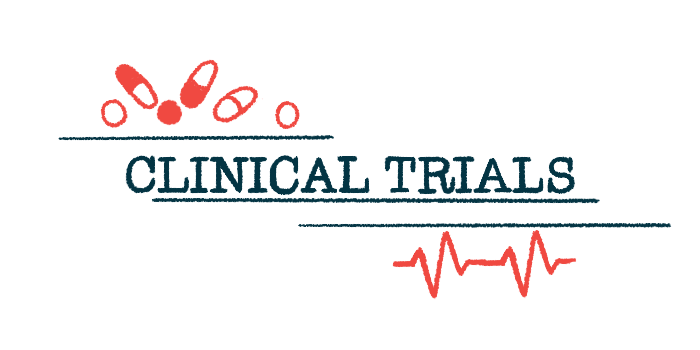P2B001 effective in key patient subgroups: Phase 3 trial data
Medicine is an investigational therapy that combines pramipexole, rasagiline

P2B001, an investigational combination therapy (pramipexole/rasagiline) from Pharma Two B, controlled Parkinson’s disease symptoms better than either of its individual components regardless of patients’ age or disease severity, according to subgroup analyses from a Phase 3 trial.
As with previous analyses involving all participants, P2B001 was as effective as the approved extended-release and dose-optimized formulation of pramipexole (sold as Mirapex), but with fewer sleepiness side effects, across these key patient subgroups.
The data were presented in a poster at the 2023 International Congress of Parkinson’s Disease and Movement Disorders, Aug. 27-31 in Copenhagen. The poster was titled, “Safety and efficacy of P2B001 (low dose combination of extended-release pramipexole and rasagiline) in patients with early Parkinson’s disease: Subgroup analyses from a randomized, controlled trial.”
Pharma Two B has indicated it will seek regulatory approval of P2B001 in the U.S. this year.
“This study’s findings, demonstrating greater symptomatic benefits of P2B001 as compared to its individual components in patients of all ages and disease severities, support the potential usage of P2B001 in patients with early [Parkinson’s disease],” Drew Falconer, MD, of the Inova Parkinson’s and Movement Disorders Center in Virginia, and a trial investigator, said in a company press release. “The data showed comparable efficacy to the established extended release pramipexole regimen titrated to optimal dosage, exemplifying a potential approach to optimizing patient care, while challenging traditional paradigms.”
What is P2B001?
In Parkinson’s, nerve cells that produce a nerve signaling chemical called dopamine progressively degenerate, leading to a lack of dopamine.
P2B001 is an oral low-dose combination of pramipexole, which mimics dopamine activity in the brain, and rasagiline, which boosts dopamine levels by blocking a protein involved in recycling it. It’s an extended-release formulation, meaning the medication is released slowly into the bloodstream to prolong its effects.
Both molecules are individually approved for managing Parkinson’s symptoms, albeit at higher doses than what’s contained in P2Boo1. Boehringer Ingelheim markets extended-release pramipexole as Mirapex and Teva Pharmaceuticals markets rasagiline as Azilect. No extended-release formulation of rasagiline is currently marketed.
After animal studies indicated combining the two medicines might have greater therapeutic benefit than either alone, Pharma Two B launched a Phase 3 clinical trial (NCT033295508) to test P2B001 in 544 early, untreated Parkinson’s patients, ages 35-80, who were within three years of their diagnosis.
Participants were randomly assigned to one of four groups and treated once daily for 12 weeks, or about three months. P2B001 (0.6 mg pramipexole/0.75 mg rasagiline) was compared to each of its individual components at the same dose — pramipexole (0.6 mg) or rasagiline alone (0.75 mg) — as well as Mirapex, where the dosage was titrated based on clinical responses and tolerability (mean dose 3.2 mg).
Top-line trial data showed P2B001 was more effective than either component at the matching dose for controlling symptoms. It was also found to be comparable in efficacy to the approved formulation of Mirapex, but was associated with less daytime sleepiness and orthostatic hypotension, where blood pressure drops significantly when standing up.
P2B001 is safe, effective regardless of age, disease severity
In the recent presentation, scientists discussed the trial findings in key patient subgroups, including when participants were grouped by age or disease severity at its start.
The analyses indicated the safety and efficacy profile didn’t differ between younger patients, ages 66 and under, and those older than 66. The profile was the same regardless of whether patients had more or less severe disease at the study’s start, as determined by scores on parts 2 and 3 of the Unified Parkinson’s Disease Rating Scale (UPDRS), with a cutoff score of 29 separating the groups.
Across all of these subgroups, P2B001 provided numerically greater symptomatic benefits relative to its individual components, with statistically significant differences in the UPDRS part 2, which evaluates activities of daily living.
As with the earlier analysis in the entire patient group, P2B001 was comparable in efficacy relative to the marketed version of Mirapex, but led to significantly lower scores on the Epworth Sleepiness Scale, reflecting less daytime sleepiness with P2B001.
“We are encouraged by the consistency of the Phase 3 trial’s subgroup analyses,” said Dan Teleman, CEO of Pharma Two B. “They reinforce our commitment to advancing P2B001 and improving the lives of people with Parkinson’s disease.”







